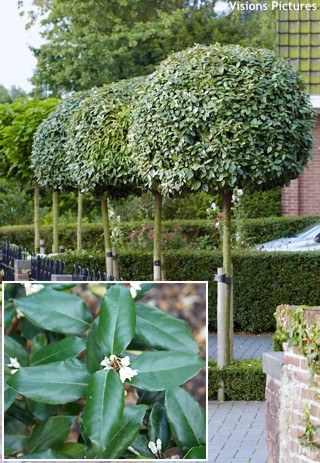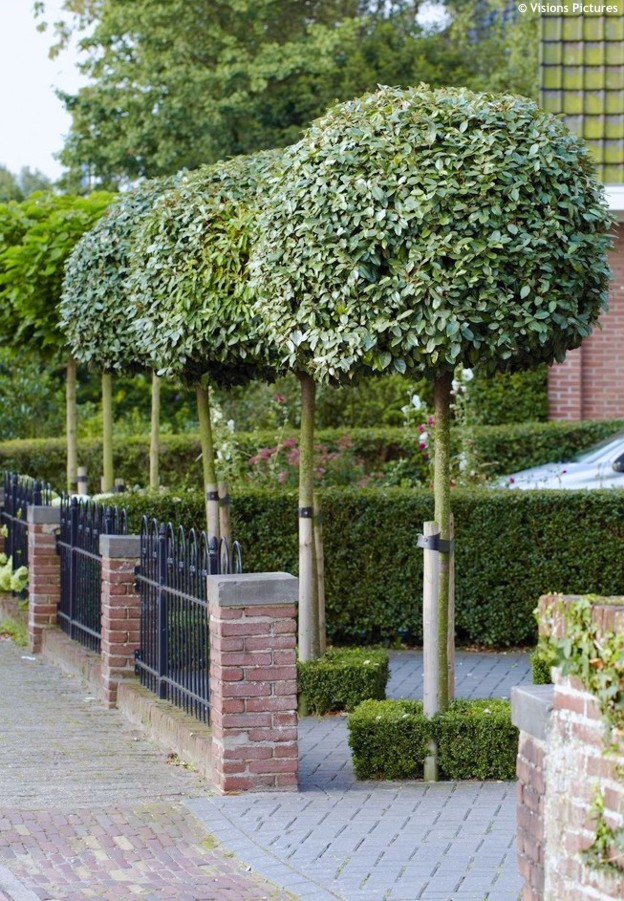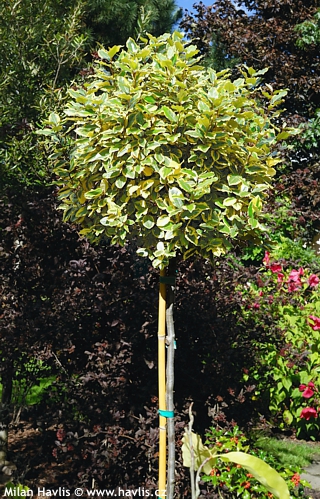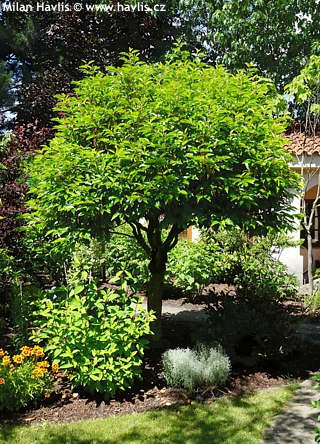Elaeagnus x ebbingei evergreen silverthorn - STANDARD TREE
size/type
small tree,small tree
usual height
2-4m
usual width
2-3m
leaves
evergreen broadleaf
colour of leaves
flowers
less showy but noticeable
colour of flowers
blooming time
August-October
location
full to partial sun
soil type
acidic (peaty) to neutral
soil moisture requirements
evenly moist (dislikes drought)
USDA zone (lowest)
7 (down to -23°C)
winter protection
for zone 5+6

for zone 7

categorized
Description of the plant:
Evergreen silverthorn is a natural hybrid of e. macrophylla with large, evergreen, rather rounded leaves and vigorously growing e. pungens with narrower foliage and thorns. It is sometimes called Russian olive which is not correct as this name is already used for its deciduous sister e. angustifolia. It is described to have been discovered by a Dutch horticulturist Simon Doorenbos (1891-1980) who named it after another Dutch botanist J.W.E. Ebbinge in 1929. However, many years later it was pointed out that a Swiss botanist Camille Servettaz (1870-1947) found this mutation, too, and named it elaeagnus x submacrophylla already in 1909. In spite of that, the whole horticultural world still sticks to e. x ebbingei and we do, too, if you don’t mind.Its leathery leaves emerge beige-grey and mature to glossy dark green with lots of grey dots making it look like stardusted. Thanks to the foliage it is sometimes called Russian olive which is not correct as this name is already used for its deciduous sister elaeagnus angustifolia.
From late summer through autumn appears a profusion of tiny, urn-shaped, creamy-beige flowers which are not easy to see at a glance but are easy to recognize from a distance because of their lovely, sweet fragrance, especially from the afternoon till the evening. They are followed by edible fruit in April or May. About 1.5cm long, oval drupes are deep red and taste like sweet version of sour cherries. You can tell they have ripened when they begin to fall. The plant can produce fruit only after mild winters.
Evergreen silverthorn is demanded as a standard tree which offers an instant and evergreen screening that blocks the unwanted views from neighbouring windows. It also serves as a handsome small evergreen tree if regularly trimmed since it grows very fast. Pruning and shaping can be done it in almost any manner and at any time from early spring until late summer.
It is soil adaptable, just avoid heavy clay and boggy or easily waterlogged situations. Mulching is necessary in our climate to protect the surface roots from heavy frost. It is hardy to about -25°C (USDA zone 6) but as a standard tree it is not suitable for the coldest locations of zone 6 with long-lasting frosts. Provide a good support for several years after transplanting i.e. at least 3-4 years before the trunk becomes strong enough to hold the canopy weight without bending.
Last update 23-01-2019
QUICK PRICE OVERVIEW
CURRENTLY SOLD OUT
WANT TO TRY A SIMILAR PLANT?


















